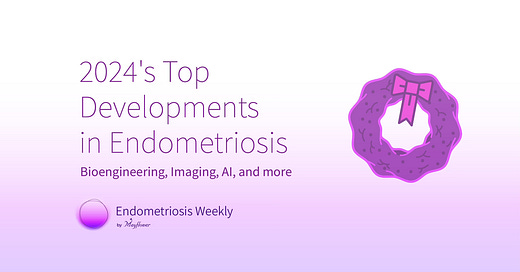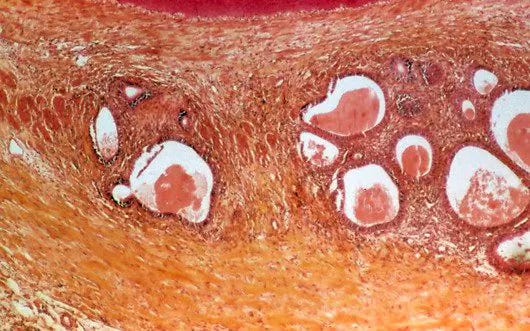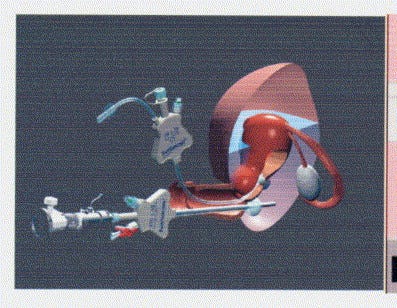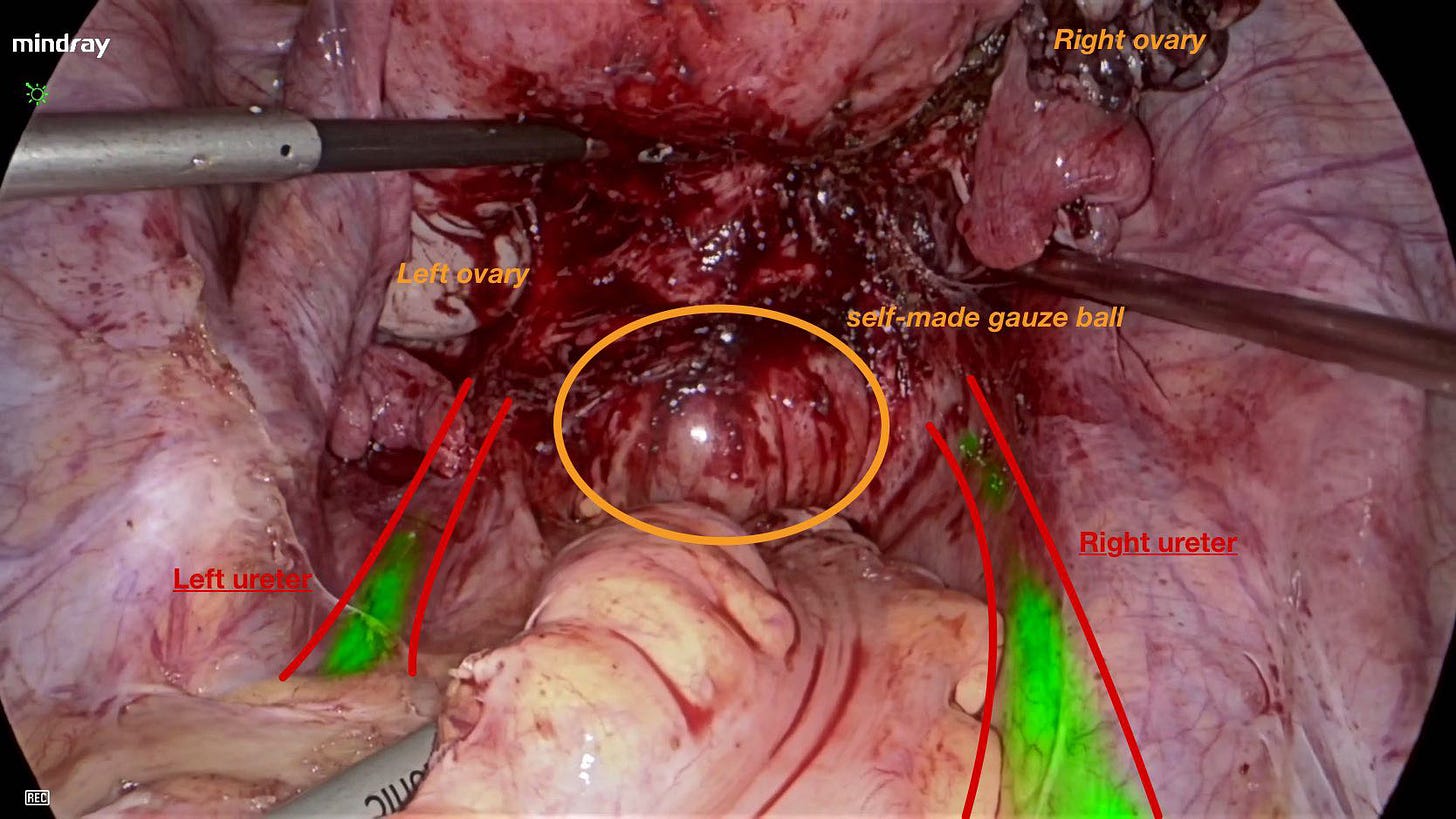2024's Top Developments in Endometriosis and a Call to Partner
Across Surgical and Medical breakthroughs, this year was full of innovations and insights promising better delivery of care through AI, BioEngineering, Ultrasound, and more
Note: Yes we are a day late today because we didn’t want to show up in your mailbox on a holiday and get ignored. That being said, Merry Christmas! And let’s begin with the last issue of the year for Endometriosis Weekly.
2024 was a good year. The stock exchange soared (except for the last few weeks), businesses saw growth, and in a barrage of rumours suggesting a recession, we are somehow still swimming with our heads above the water.
Scienctific progress however, especially that with endometriosis, will be our focus today. Because a lot has happened there, and needs to be mentioned, monitored, and adopted early to further our ability to better treat patients.
In today’s edition, we look at a list of 5 advancements in the field and the possibilities they hold for better treatment in the future.
1. Breakthrough UseCase of DCA in Endometriosis
Used otherwise for treating metabolic diseases in children, DCA or Dichloroacetate has been seen to be effective in breaking down the cells that cause endometriosis.
Women with endometriosis produce more lactate - a harmful human waste product of glucose metabolism - than those without the disease. Professor Andrew Horne of the University of Edinburgh and his team found that increased lactate created an environment that supported the growth and spread of endometriosis cells. Targeting the cells with DCA was subsequently found to reduce lactate production - which could halt the progression of the disease in its tracks.
Phase 2 of the clinical trials are expected to begin soon and if all goes well, the drug could be commerically available in the market as soon as 2030. source
2. AI based Fully Automatic Surgeries
You thought surgery was sensitive enough to be spared by AI? You’re wrong. Very wrong. Infact the developers behind “Nahid” would argue that it’s exactly why you need AI’s intervention in managing the disease.
A novel AI-based algorithm, named 'Nahid,' has been developed to perform fully automated surgeries for isolated ovarian endometriosis. Utilizing computer vision techniques, the system can automatically diagnose and treat endometriosis during surgery, potentially increasing precision and reducing human error in surgical procedures.
The paper boasts of significant accuracy (when compared to human intervention) through AI for detecting organ borders and disease occurance. source
While the surgery shown is primitive, it’s important to know that this is the worst that AI is ever going to be. It only gets better from here and robotic assistance in laparoscopic surgeries will gain significantly from these advancements.
3. Scareless Laparoscopy: A Unicorn No More?
We all know people who have tried peddling scarless surgeries and how they are generally ineffective in treating the disease. Laparoscopy continues to be the gold standard for treating the disease but frontiers are being pushed for innovation on how minimally can a minimally invasive surgery, invade. That’s a confusing statement so I will simply introduce the innovation.
Fertiloscopy, a minimally invasive procedure performed via the vagina and the pouch of Douglas, combines laparoscopy, salpingoscopy, and hysteroscopy. It promises comprehensive examination and treatment of endometriosis with reduced patient recovery time and no visible scarring, offering an alternative to traditional laparoscopy.
But calling it scarless is a problem. While the scar might not present cosmetically, it involves scaring the uterus to further evaluate the pelvis. Closing this scar effectively will continue to be a challenge but the technology is promising for primitive cases nonetheless.
One of the biggest challenges remain access and effective dissection in the reperitoneal, and retrouterine regions along with additional access limitations depending on the position of the uterus within the pelvis.
4. Enhance Intra-Op Leision Visualization
In one of my personal favourite breakthroughs, a vision enhancing tech through flouro luminiscence is finding its feet. In a study published late last year and further garnering appreciation this year, doctors have been able to use the Indocyanine Green dye to produce NIRF or Near Infrared Flourosence in the ureters to more effectively deliniate their track and assist uretrolysis.
Anyone who ever operated a pelvis, knows just how important this step is. This methodology further opened the door luminiscence based on selective cell dying and infrared visualization.
This Royal Society of Chemistry article puts emphasis on techniques, including near-infrared fluorescence imaging, magnetic resonance imaging, and photoacoustic imaging, that have the potential to enhance lesion visualization and surgical precision.
5. A New Atlas of the Endometrium
An international team of scientists has created the most precise cellular map of the endometrium, the inner lining of the uterus. This advancement could lead to better understanding and treatment of endometriosis.
By integrating their cellular map with genome-wide association studies, the team identified two types of immune cells and two types of stromal cells potentially involved in endometriosis. This paves the way for targeted research into the condition's underlying mechanisms.
The atlas reveals interactions between immune cells (macrophages), stromal cells, and blood vessel cells that facilitate the endometrium's ability to regenerate without scarring. This knowledge could inform treatments for conditions involving abnormal endometrial shedding or regeneration. source
This fundamental research holds tremendous possibilities for informing our approach to clinical, medical, and surgical management of endometriosis.
45000 and Counting!
It’s been a great year for the Endometriosis Weekly (EW) community as well. Starting from the peace loving town of Ahmedabad, Gujarat, India, we’ve now grown to over 45000 subscribers of this newsletter.
Every week over most part of this year, we have, without fail, sent out what we thought could add value to your surgery practice. And we intend to keep going.
In 2025 EW looks forward to more partnerships with organizations working to make doctors lives easier. If you are a surgical devices, drug, imaging or peri-operative care company looking to reach out to a greater number of doctors, please get in touch. ew@mayflowerhospital.com is our open, and frequently addressed channel.
With that, we wish everyone a Happy New Year in advance! We will see you in 2025














